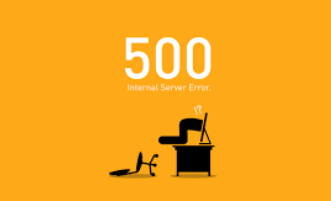
The ‘500 7’ error, often encountered in server communications, presents a unique challenge in the field of information technology. This error code not only signals a server-side issue that disrupts user interactions but also serves as a critical indicator of underlying system vulnerabilities that may not be immediately apparent. Addressing this error requires a sophisticated understanding of server architecture and the implementation of robust diagnostic protocols. Exploring the implications of the ‘500 7’ error, including its origins and the strategies employed to mitigate its impact, reveals much about the evolving landscape of digital infrastructure and the continuous need for advanced technical solutions in maintaining operational continuity.
Understanding the Code ‘500 7’
While the code ‘500 7’ may appear cryptic at first glance, it typically indicates a specific server-side error in web communications.
Understanding and addressing this error requires precise troubleshooting techniques. Analysts must decode error codes methodically to ensure freedom from recurring issues, enhancing system reliability and user experience.
Each code provides crucial insights into the nature of the malfunction, guiding corrective actions.
Historical Context of ‘500 7’
To appreciate the significance of the ‘500 7’ error code, it is essential to explore its historical origins and evolution in the context of web server technology.
Tracing back, this code reflects the historical significance and cultural influence of early internet frameworks.
Its development underscores a pivotal shift towards recognizing and diagnosing server errors, embodying a freedom in troubleshooting and refining digital communications infrastructure.
Practical Applications in Technology
Understanding the ‘500 7’ error code is crucial for developers and IT professionals in diagnosing and resolving server-related issues efficiently.
Leveraging cloud computing enhances data security and user experience by distributing load.
Machine learning algorithms can predict and mitigate such errors, optimizing server response times and reliability, ensuring freedom from disruptive downtime and maintaining seamless digital operations critical in today’s technology-driven environments.
Read more: Wondering about the mysterious ‘500 5’
‘500 7’ in Software Development
The term ‘0 7’ in software development often refers to a specific, yet cryptic, error or status code that requires detailed analysis for accurate interpretation and resolution.
Effective debugging techniques and code optimization are crucial in addressing this anomaly.
Future Implications and Trends
Several emerging trends in software development suggest that addressing error codes like ‘500 7’ will become increasingly reliant on advanced machine learning algorithms and real-time data analysis.
The integration of these emerging technologies necessitates stringent ethical considerations, ensuring freedom from biased outputs.
Methodical implementation and precise monitoring are essential to harness these advancements effectively while safeguarding data integrity and user autonomy in the digital landscape.
Conclusion
In conclusion, the resolution of the ‘500 7’ error code epitomizes the ongoing challenge within server management and digital system reliability.
Through a historical understanding, precise diagnosis, and innovative applications, stakeholders can enhance system efficiency and robustness.
As trends evolve, integrating advanced technologies such as machine learning will not only refine troubleshooting methodologies but also fortify the infrastructure against future disruptions, thereby securing a more reliable and efficient digital ecosystem.
